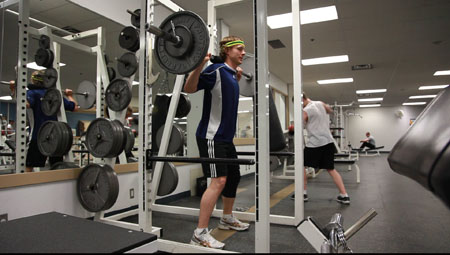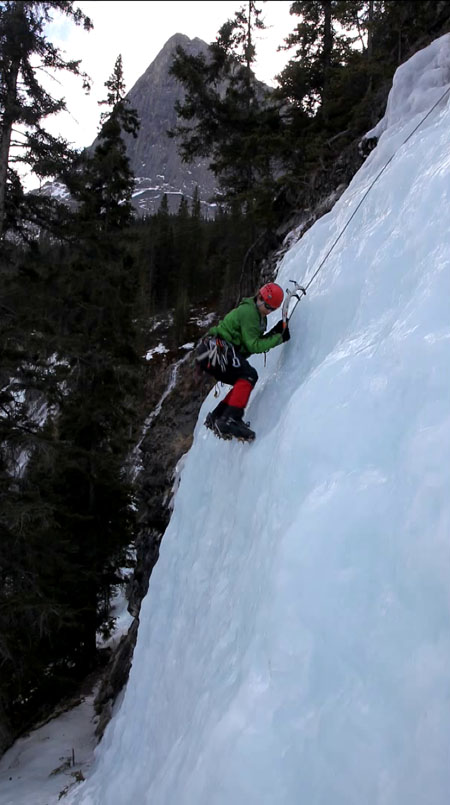As the next batch of adventurers get ready for their own attempts at Mt. Everest, I find myself asking them how they train for “the big E” (as some people call it). When I was preparing and training I did all the research I could, asked all the people that might know, so that I would be as prepared as possible. Looking back on it almost one year later I thought I would list the things that I thought helped me the most, and in general they can be applied to other circumstances also. In order if decreasing importance they are:
1. Listen to people that have done it before.
The fact is Everest has been climbed by thousands of people. Chances are if you are at all entertaining the idea of climbing Everest you’ve met someone who has done it. Hopefully you’ve climbed with them. Ask them all they know and take it seriously. I attribute a lot of my success to picking the brains of Ryan Waters at Mountain Professionals, who I climbed Aconcagua with, and Arnold Coster, who I climbed Cho Oyu with.

2. Climb an 8000m mountain before attempting Everest
One of the things I learned from point (1) above is this point. The company I climbed Aconcagua with stated that climbing Aconcagua was enough to qualify for Everest. However I was convinced by others it would be better to climb Cho Oyu first, and I’m glad I did. Aconcagua to Cho Oyu was a step up, a predictable one to be honest. And Cho Oyu to Everest was of course a step up also, but more that I thought it would be.
I have since developed my own reason for recommending that people climb Cho Oyu first. The straight fact is that nobody knows how their body will react to elevations of 8000m. And to put it bluntly, it’s much easier for others to drag your unconscious or otherwise disabled body from or near the summit of Cho Oyu than from most points on Everest. So as you learn how your body reacts to 8000m, do it in a place that has more room for ‘self discovery’ than Everest.
Another, less important reason, is to prepare one’s mind to long expeditions. Going from a three-week expedition like Aconcagua or Denali to an eight-week Everest expedition is a big jump. Most people that don’t summit Everest are not turned back by bad weather or from being too tired or not having enough technical experience. They choose to go home early because they don’t know how miserable an Everest expedition is, how taxing on the mind and body, how much they’ll miss their families (keep all family contact to a minimum when on the expedition to help with this point).
I have met a bunch of people, from marathon runners in tremendous shape to true Alpiniste mountaineers who make first ascents in the Alps and Andes, decide to go home early. And there’s nothing wrong with that, I also wanted to go home early at various points. But there is a way to be prepared for it.

3. Train Mentally
I could write a lot about this but I think it has been said better by Ice and Mixed Climber extraordinaire, fellow Canadian Will Gadd on his own blog Gravsports. An excerpt is below:
Nobody wants to think about mental fitness. It’s a lot easier to keep track of physical improvement than mental improvement. To become stronger mentally you have to look inside yourself and realize that, even if you can do a one-arm pullup with an engine block in the other hand, the ultimate limiting factor is your head. And most people are simply too weak mentally to actually get stronger mentally. For many people the area between their ears is completely dark, off-limits and filled with soul-twisting demons that just can’t be faced much less slain. But, unless you know how to hit your ideal mental performance state, all your training is quite literally a waste…
How did I train mentally? By climbing Cho Oyu first (see point above). By going (several years in a row) on a ski trip with friends, which involved a profane amount of drinking all night, followed by extreme hangover pain the next morning, but going skiing anyways when I felt like dying, feeling that nauseating sting of yesterday’s alcohol still in my system course through my veins as my heart rate climbed as we skied. By following a strict diet in my training, eating things that were good for me but rarely good tasting, often the same thing day after day.
(Just to elaborate on a couple of those points above, my training specifically for Everest involved a strict diet and no alcohol at all, with the exception of that New Year’s ski trip I mention above. I jokingly called it part of my mental training as I took those few days off, but there was a lot of truth to it. Also, the discipline I learned from my diet of eating the same thing day in and day out helped me to eat whatever was available on Everest, to wolf down that tasteless bowl of Dal Bhat in Camp 2 and ask for another as I watched my companions play with their first serving even though I was sick of eating it as much as they were. I lost 25 pounds on Everest so eating all you can plays a big role.)

4. Everything Else
After those three points above comes the thing that most people focus on, the physical training, technical climbing ability, mountain experience, etc. I think they are still quite important, but there are enough other people that have written about them that I will defer to them. I say quite often, you have to come to Everest prepared physically. But once you show up physically trained, climbing the mountain is 90% mental.
That’s all for this post, I think it came out a little longer than expected. But I cannot finish before saying that this is just my experience and opinion. Your mileage may vary. Because honestly, what do I know; I have only summited Everest once, and I consider myself lucky to have done that. So chances are I might have no idea what I’m talking about.




